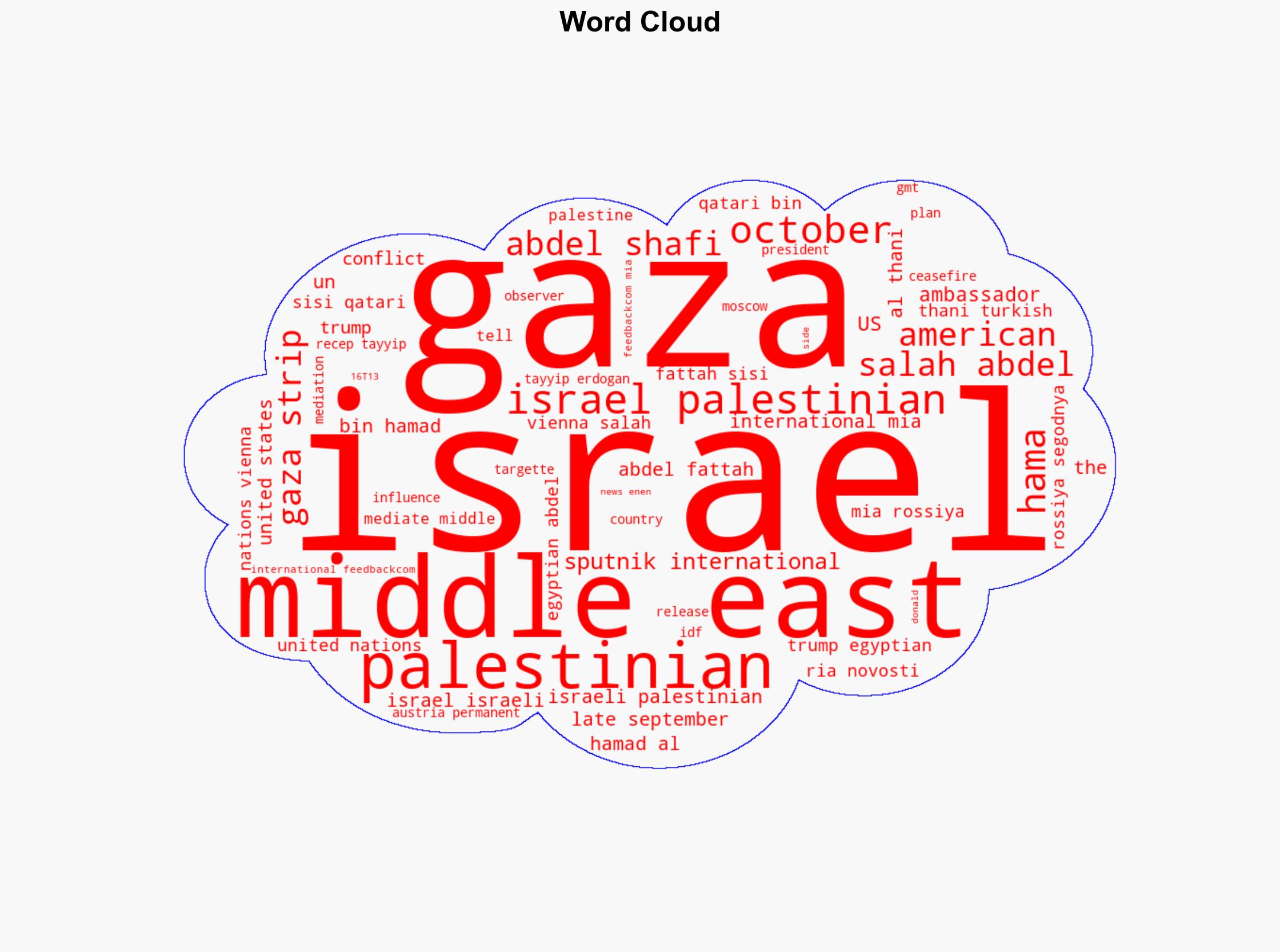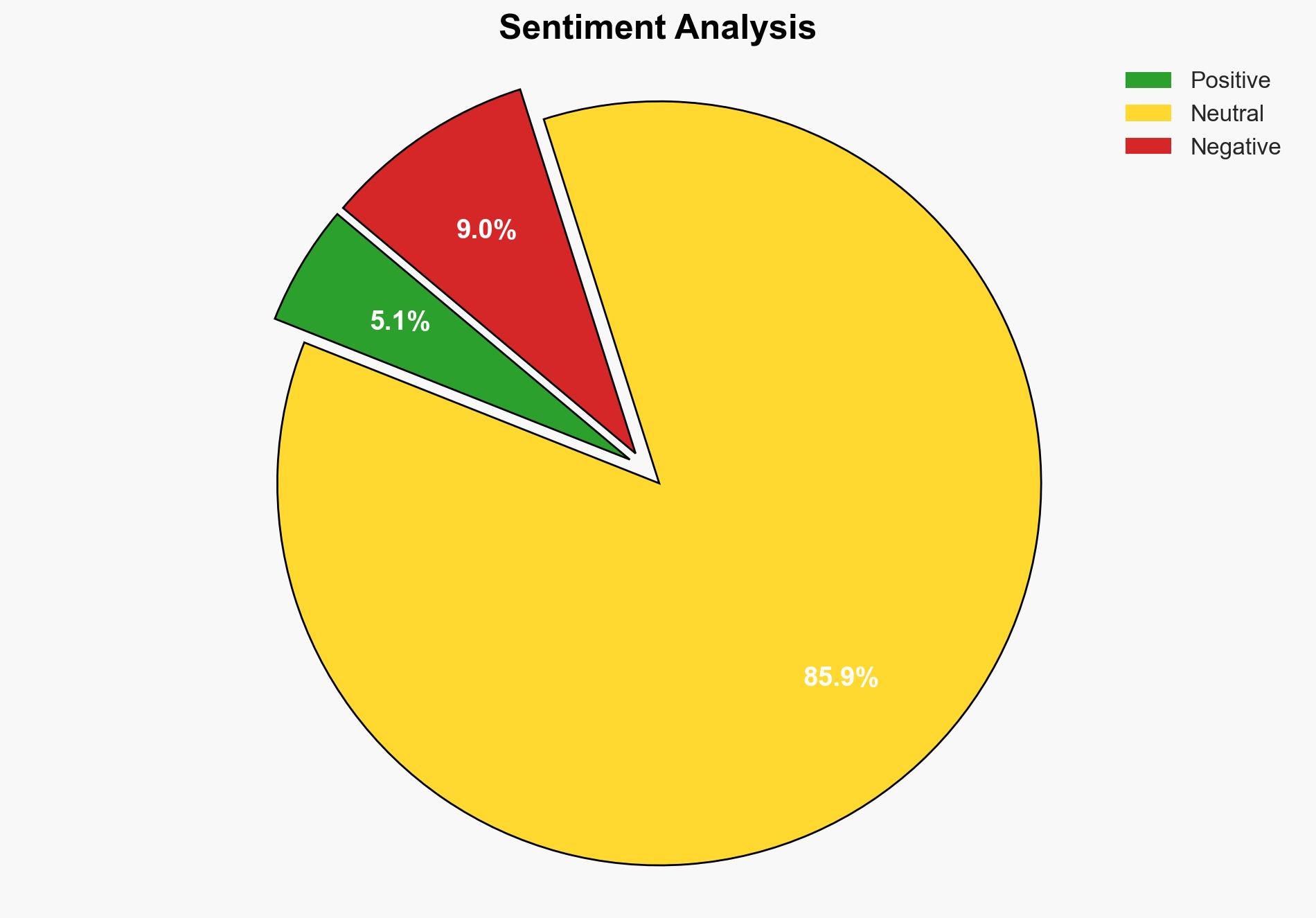US Cannot Mediate in Middle East After Siding With Israel – Palestinian Ambassador – Sputnikglobe.com
Published on: 2025-11-16
AI-powered OSINT brief from verified open sources. Automated NLP signal extraction with human verification. See our Methodology and Why WorldWideWatchers.
Intelligence Report:
1. BLUF (Bottom Line Up Front)
The United States’ ability to mediate in the Middle East, particularly in the Israeli-Palestinian conflict, is significantly compromised due to perceived bias towards Israel. This perception undermines its role as a neutral mediator. Confidence Level: Moderate. Recommended action: The U.S. should consider recalibrating its diplomatic approach to regain credibility as a mediator.
2. Competing Hypotheses
Hypothesis 1: The U.S. cannot effectively mediate in the Middle East due to a historical and ongoing bias towards Israel, as perceived by Palestinian representatives and other regional actors.
Hypothesis 2: Despite perceptions of bias, the U.S. can still mediate effectively by leveraging its influence over Israel and engaging with other regional stakeholders to facilitate dialogue.
Hypothesis 1 is more supported due to consistent historical patterns of U.S. foreign policy favoring Israel, as well as recent actions and statements that reinforce this perception.
3. Key Assumptions and Red Flags
Assumptions: The U.S. has historically sided with Israel, which influences current perceptions. Regional actors view U.S. mediation efforts through this lens.
Red Flags: Statements from Palestinian representatives and other regional actors expressing distrust in U.S. mediation efforts. Lack of criticism from the U.S. towards Israeli military actions in Gaza.
Deception Indicators: Potential for strategic misinformation from regional actors to influence U.S. policy and public opinion.
4. Implications and Strategic Risks
The perception of U.S. bias could lead to increased regional instability, as Palestinian and other Arab actors may seek alternative mediators, potentially diminishing U.S. influence in the region. This could escalate into broader geopolitical tensions, affecting U.S. interests and alliances.
5. Recommendations and Outlook
- Actionable steps: The U.S. should engage in confidence-building measures with Palestinian and other regional stakeholders, potentially involving third-party mediators to enhance credibility.
- Best Scenario: The U.S. recalibrates its approach, regains trust, and successfully mediates a sustainable peace agreement.
- Worst Scenario: Continued perception of bias leads to diminished U.S. influence and increased regional conflict.
- Most-likely Scenario: The U.S. struggles to regain its role as a neutral mediator, leading to prolonged conflict and regional instability.
6. Key Individuals and Entities
Salah Abdel Shafi (Palestinian Ambassador), Donald Trump (Former U.S. President), Abdel Fattah Sisi (Egyptian President), Tamim bin Hamad Al Thani (Qatari Emir), Recep Tayyip Erdogan (Turkish President).
7. Thematic Tags
Regional Focus, Middle East, U.S. Foreign Policy, Israeli-Palestinian Conflict, Diplomacy, Mediation, Regional Stability
Structured Analytic Techniques Applied
- Causal Layered Analysis (CLA): Analyze events across surface happenings, systems, worldviews, and myths.
- Cross-Impact Simulation: Model ripple effects across neighboring states, conflicts, or economic dependencies.
- Scenario Generation: Explore divergent futures under varying assumptions to identify plausible paths.
- Cognitive Bias Stress Test: Structured challenge to expose and correct biases.
- Narrative Pattern Analysis: Deconstruct and track propaganda or influence narratives.
Explore more:
Regional Focus Briefs ·
Daily Summary ·
Support us
·





